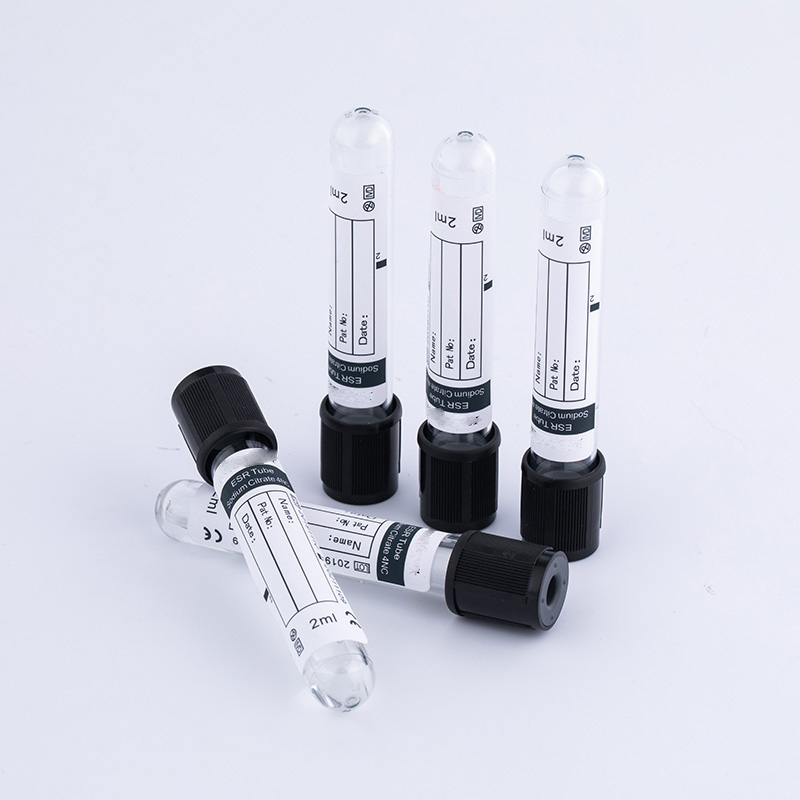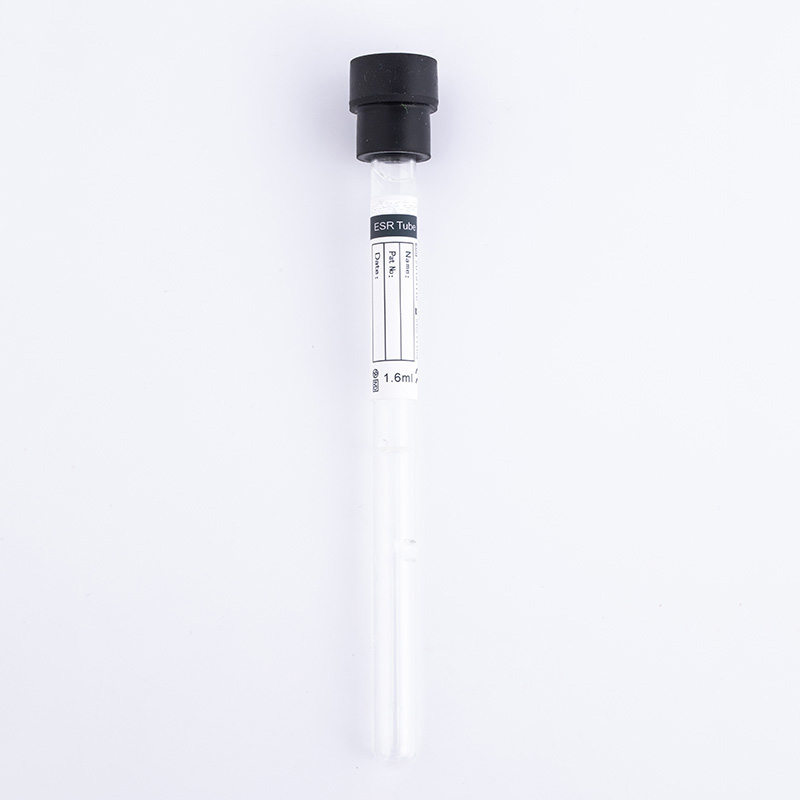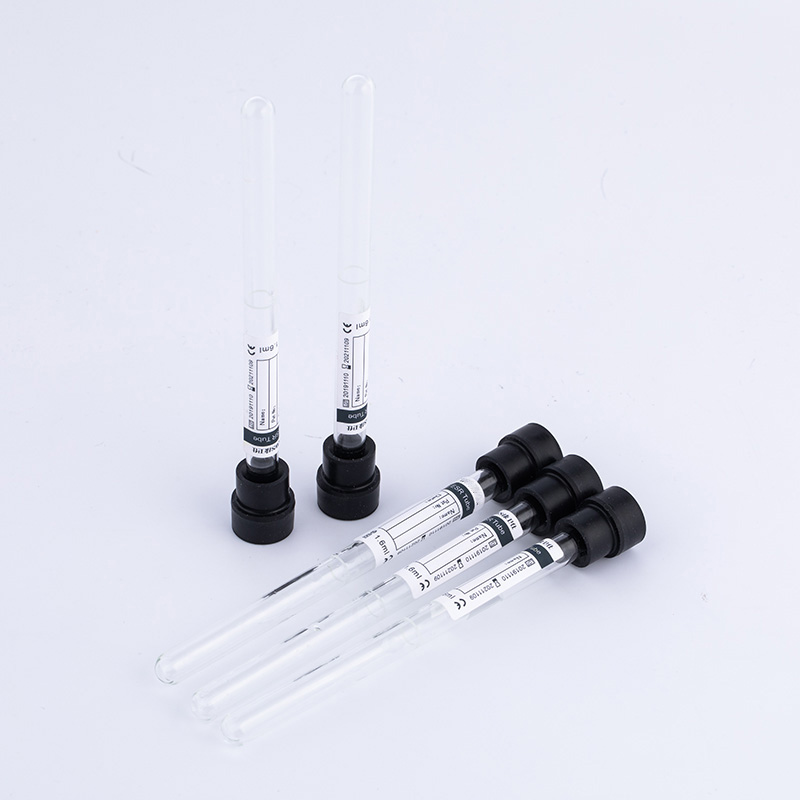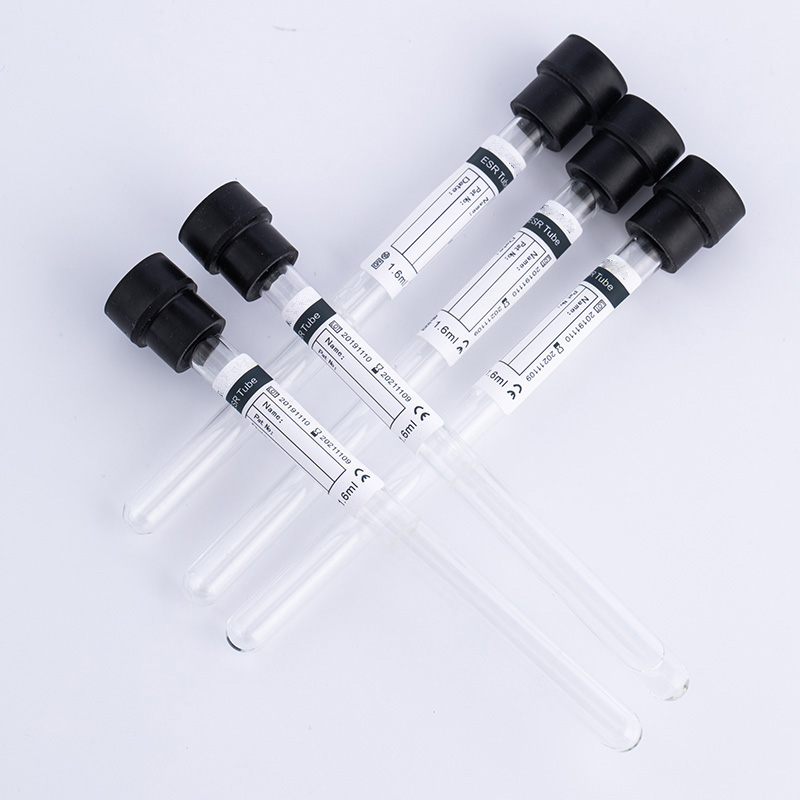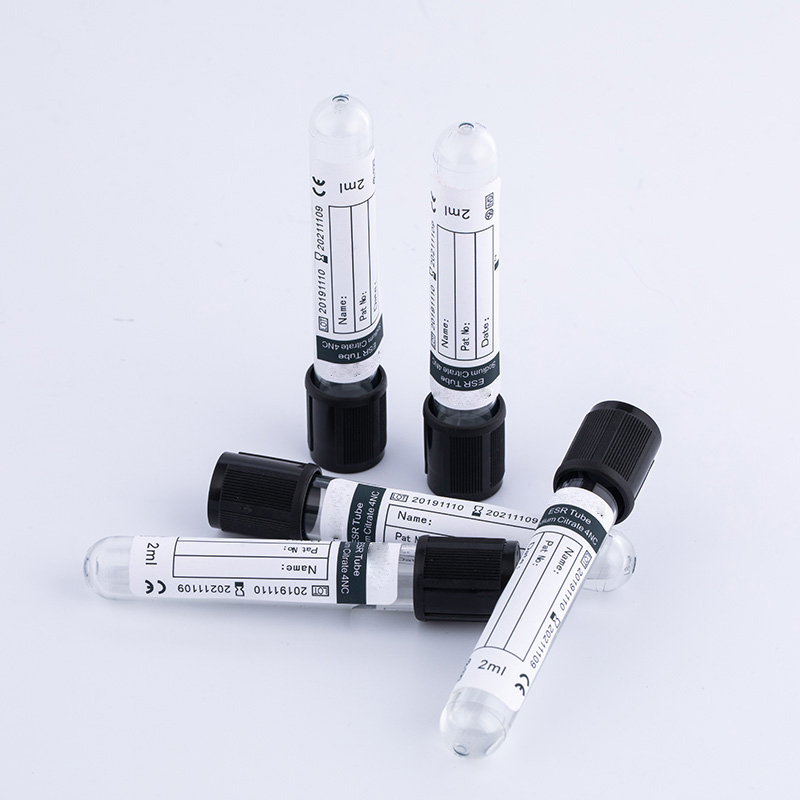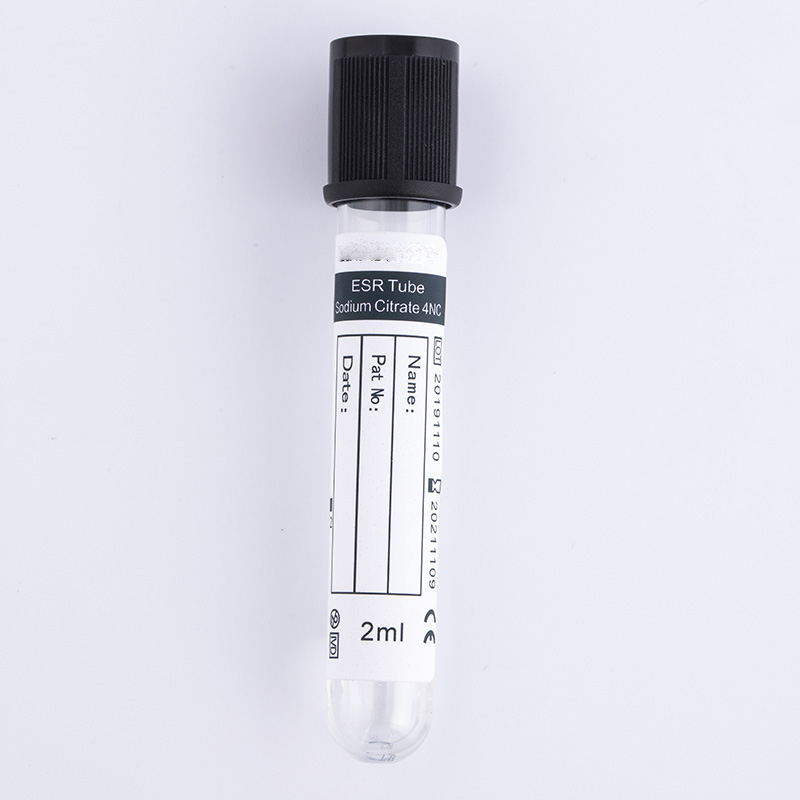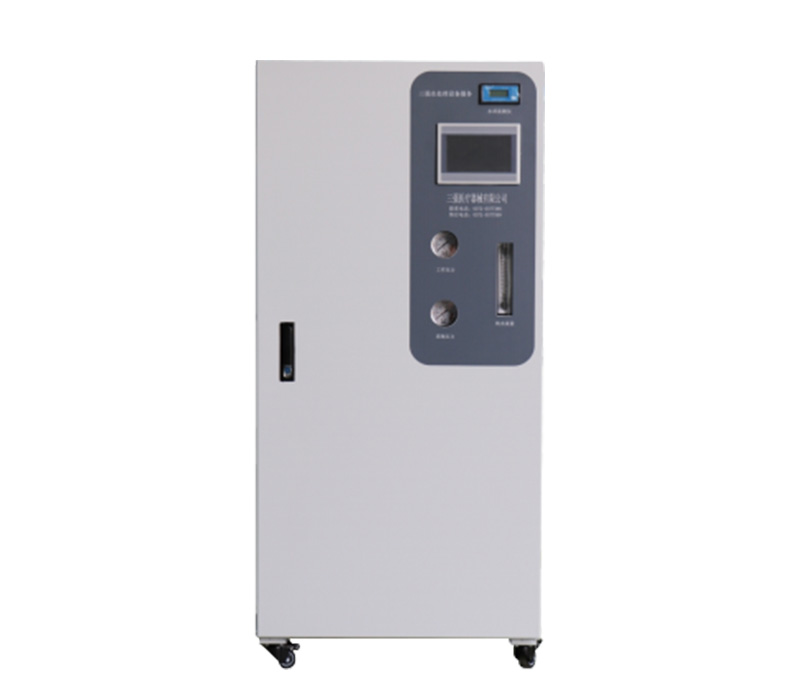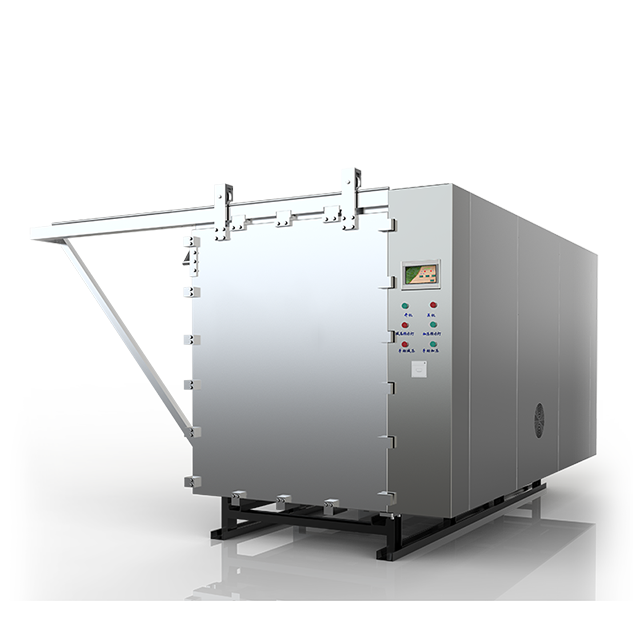Blood Collection Tubes

ESR Tube
The concentration of sodium citrate is 3.8%. The volume ratio of anticoagulant vs. blood is l:4. It is normally used for blood sedimentation test. High volume of anticoagulant dilutes blood and therefore, accelerates blood sedimentation rate. Due to little volume and negative pressure inside the tube, it needs some time for blood collection. Do patiently wait until blood stops flowing into the tube.
-
Description
An ESR (Erythrocyte Sedimentation Rate) Tube is a blood collection tube that is employed in determining the rate at which red blood compartments settle –s in the event of inflammation or other medical conditions of interest. The tube contains sodium citrate as an anticoagulant in a precise 1:4 with blood, which allows the blood to not clot and the blood sample to remain intact all while being anticoagulant. ERS is also frequently used in diagnosing the various diseases, infections, autoimmune diseases, and inflammatory disorders.
Features of ESR Tube
- Sodium Citrate Anticoagulant: Has sodium citrate at 1:4 concentrations to avoid the formation of blood clots and preserve the samples for proper analysis.
- Optimized Sedimentation: For use on erythrocyte sedimentation tests, it guarantees accurate findings for inflammation indicators.
- Clear and Accurate Measurements: High degree of accuracy of ratio and use of high-quality materials which let determine the sedimentation rate in the course of time.
- Color-Coded Cap: Usually black or a certain shade that is assigned with ESR where such does not interfere with other items in clinical usage.
- Durable Construction: Available in PET or glass and structurally designed to withstand chemicals and be compatible with laboratory instruments.
Applications of ESR Tube
- Inflammation Detection: Originally employed as a mark-er of inflammation, which may signal an infection, auto-immune disease, or other inflammation-based illness.
- Chronic Disease Monitoring: Sought after for remission when demonstrating changes in symptoms of chronic, inflammatory diseases such as rheumatoid arthritis and lupus.
- Infection Diagnosis: Aids in diagnosis of infections where ESR is high and can alert the clinician on the infection that may be present.
- Cancer Assessment: Often employed in combination with other tests to evaluate some illnesses such as some types of cancer, in which the ESR may be elevated.
- Routine Screening and Follow-Up: Often applied on a daily or follow-up examination to diagnose or observe a condition liable to cause inflammation.
More Vesemed Products
View all patient monitors, medical devices and products in one convenient location.

